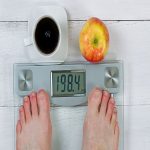
It can happen when you’re stuck in traffic, or hunched over for hours at your desk, or even sitting in the stands watching your child’s lacrosse game — that painful twinge in the back of your neck. These fast and easy stretches can help, and you can do them anywhere. Repeat each one up to three times unless otherwise indicated, and rest for 10 seconds between each exercise. Stretch No. 1: Lower your chin to your chest as far as you can go without causing any pain. Hold for 20 seconds. Return to start, rest and repeat. Stretch No. 2: Without moving your shoulders, turn your head to the right as far as you can go. Hold for 20 seconds. Slowly bring your head all the way to the left and hold for 20 seconds. Return to center, rest and repeat. Stretch No. 3: Tilt your head to bring your right ear to right shoulder without moving the shoulder. Hold for 20 seconds. Switch to the left side and hold for 20 seconds. Return to center, rest and repeat the sequence. Stretch No. 4: Turn your head to the right and look behind you. From this position, raise your chin toward the ceiling. Hold for 20 seconds. Slowly return to start and repeat. Then switch to the other side and repeat. Stretch No. 5: Gently… read on >
















